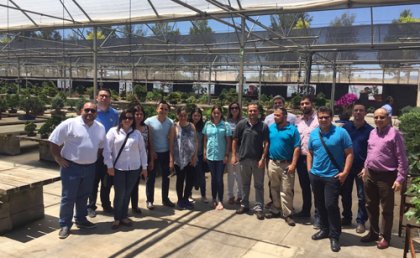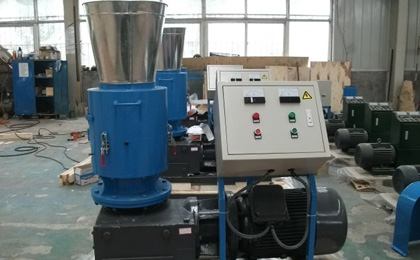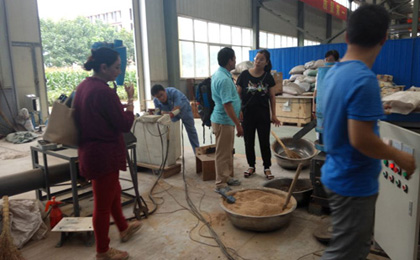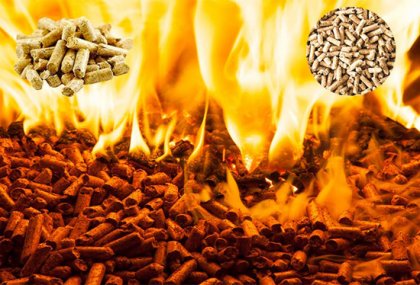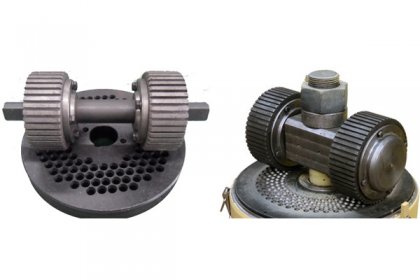Nowadays, with the rapid development of the world, production and life depend more and more on energy. Energy has become the basic material that restricts the development of national economy. Petrochemical energy, as a primary energy, can not be regenerated because of limited reserves, which has attracted the attention of many countries all over the world. As a renewable resource, biomass energy plays an important role in petrochemical alternative energy. The development of biomass energy can not only supplement the shortage of fossil energy, but also produce significant environmental benefits. It is an efficient, simple and practical way to convert loose biomass feedstock into pellet fuel by solid state molding technology. China is rich in biomass resources, for the development of biomass energy utilization technology to provide a wide range of raw materials guarantee. Although the research and development in this field started late in China, with the increasing demand of market and environment, the forming factors of biomass pellet fuel have been studied. It plays an important role in the development of biomass curing molding technology and its equipment in China.
There are many factors influence the quality of biomass pellets, such as raw material composition, raw material size, raw material humidity, molding temperature, material layer thickness, extrusion speed, extrusion pressure and molding pore parameters, etc.

Raw materials composition
Raw material composition is the main factor affecting particle durability index (PDI). The effect of raw material composition on PDI was about 40%. The contribution rate of various ingredients to the whole PDI is different. According to the different contribution rate of different substances to PDI, some commonly used raw materials are given different pellet quality factor(PQF).
The higher the PQF, the more density pellets and the higher the PDI. For example, like lignin , the PQF is higher and can be used as binder, such as acid oil, its PQF value is -40. This is due to the fact that there are so many oil raw materials that produce oil film among pellets. The existence of oil film leads to the dispersion and isolation of pellets, which makes the produced pellets can not be combined effectively. The looser the pellets are, the lower of the PDI. Better pellets can be obtained when the weighted sum of particle mass coefficient of each component in the raw material is greater than 4.7.
Raw material granularity
The finer the particle size, the larger the surface area of the particle, the easier it is to combine with each other, and the easier it is to absorb heat and water when mixed and tempered, and the better the softening and gelatinization of biomass, the more dense and smooth the pellet are. It is not easy to crack. However, the smaller the granularity, the higher the energy consumption in crushing process, so the smaller granularity can not be pursued. The particle size uniformity of raw material is also very important. After crushing, there can't be too large particles in the raw material, and too large particles can not be easily combined with other raw materials, which affects the homogeneity of mixing and tempering, and the surface of granulated particles is prone to produce the phenomenon of uneven and concave. And it is easy to produce radiative cracks around large particles. Grain is easily breakage. From the point of granulating, the smaller the grain size and the high strength of granulating, it is not suitable to adjust the humidity, and it is easy to bind the mass, and the crushing energy is too high. The grain is too rough and the hole is difficult to enter. The grinding loss of the mould hole and the press roll is increased, and the forming of the granulating is difficult, especially the small aperture mold is more difficult, and it is more difficult. The effect of material softening and gelatinization is poor, resulting in high material consumption, low yield and high powder yield. Therefore, the particle size is generally 1/2 to 2/3 of particle diameter or the sieve plate with half particle diameter used in the smashing control, and the maximum should not be > 10mm.

Raw material humidity
Combining water and free water in biomass raw materials act as lubricants, reducing the internal friction between particles and increasing the fluidity of particles, thus promoting the combination of particles. Moreover, due to hydrolysis and water absorption softening of biomass, plasticized adhesion is enhanced, proper humidity can promote the molding of particles, and different raw materials are suitable for different humidity, so it is suitable to be affected by temperature composition, etc. The humidity of most raw materials is 8% and 15%, but there are also some materials with high humidity requirements, such as teak wood scraps or even 50%, etc. The rare raw materials are best tested to ensure the particle effect. For raw materials with excessive humidity before granulation It must be treated to reduce water content and is usually treated by drying process.
The above is the influence factor of raw materials, about other factors we will discuss in the next text.

